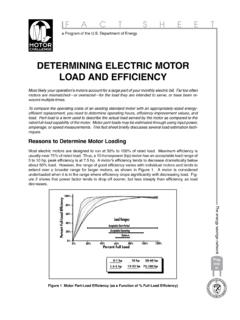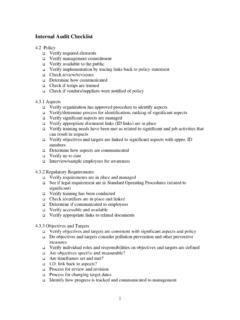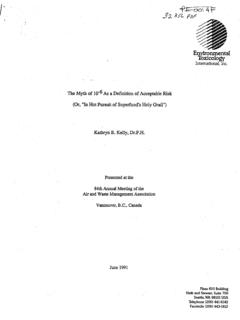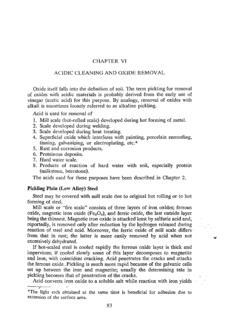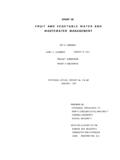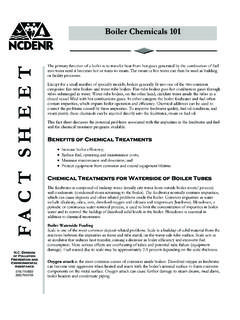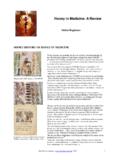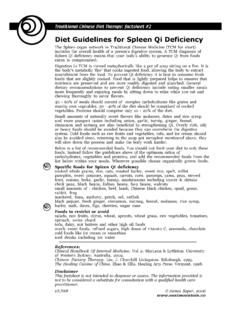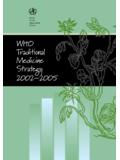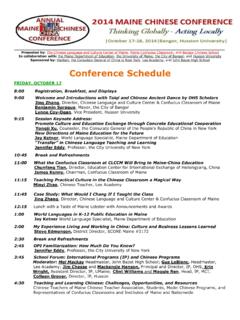Transcription of Medicinal Plants and Traditional Medicine in Africa ...
1 M E D I C I N A L P L A N T U S E I N A F R I C AIn all countries of the world there exists traditionalknowledge related to the health of humans an danimals. The importance of Traditional Medicine asa source of primary health care was first officially re c o g-nised by the World Health Organisation (WHO) in theP r i m a ry Health Care Declaration of Alma Ata (1978)and has been globally addressed since 1976 by theTraditional Medicine Programme of the WHO. ThatP rogramme defined Traditional Medicine as: the sumtotal of all the knowledge and practices, whetherexplicable or not, used in diagnosis, prevention andelimination of physical, mental or social imbalance andrelying exclusively on practical experience and obser-vation handed down from generation to generation,whether verbally or in writing.
2 In Africa , Traditional healers and remedies madef rom Plants play an important role in the health ofmillions of people. The relative ratios of Traditional practi-tioners and university-trained doctors in relation to thewhole population in African countries are re v e a l i n g .In Ghana, for example, in the Kwahu district, therea re 224 people for every Traditional practitioner,c o m p a red to nearly 21,000 people for one university-trained doctor. The same applies to Swaziland wherethe ratios are 110 people for every Traditional healerand 10,000 people for every university-trained is estimated that the number of Traditional practi-tioners in Tanzania is 30,000 40,000 in comparisonto 600 medical for a long time to a marginal place in thehealth planning of developing countries, traditionalmedicine or, more appro p r i a t e l y, Traditional systems ofhealth care, have undergone a major revival in the lasttwenty years.
3 Every region has had, at one time in itsh i s t o ry, a form of Traditional Medicine . We can there-f o re talk of Chinese Traditional Medicine , Arabictraditional Medicine or African Traditional Medicine is Traditional because it is deeply ro o t e din a specific socio-cultural context, which varies fro mone community to another. Each community has itsown particular approach to health and disease even atthe level of ethno-pathogenic perceptions of diseasesand therapeutic behaviour. In this respect, we cana rgue that there are as many Traditional medicines ast h e re are communities. This gives Traditional medicineits diverse and pluralist nature .The World Health Organisation (WHO) has describedtraditional Medicine as one of the surest means toachieve total health care coverage of the world spopulation.
4 In spite of the marginalisation of traditionalmedicine practised in the past, the attention curre n t l ygiven by governments to widespread health-care appli-cation has given a new impetus to re s e a rch, investmentand design of programmes in this field in several devel-oping countries in Africa and elsewhere .The demand by most of the people in developingcountries for Medicinal Plants has been met by indis-criminate harvesting of spontaneous flora includingthose in forests. As a result, many plant species havebecome extinct and some are endangered. It is there-f o re necessary that systematic cultivation of medicinalplants be introduced in order to protect thre a t e n e dspecies. As Africa s population grows, demand for tradi-tional medicines will incre ase, and pre s s u re onmedicinal plant re s o u rces will become greater than loss of habitat is the major factor contributingto the depletion of natural re s o u rces in Africa , collec-tion of wild Plants for Traditional medical use ise x t remely detrimental to certain species.
5 Documentationof Medicinal use of African Plants is becoming incre a s-ingly urgent because of the rapid loss of the naturalhabitat for some of these Plants due to anthro p o g e n i cactivities. The continent is estimated to have about216,634,00 ha. of closed forest areas, and with acalculated annual loss of about 1% due to defor-SU S TA I N A B L EDE V E L O P M E N TIN T E R N AT I O N A L179AB S T R A C TThe majority of people in Africa use plant based Traditional medicines for treating illness andailments. Demand for Medicinal Plants is incre a s i n gin Africa as the population grows. The threat posed byo v e r-exploitat ion of m edicinal Plants has serious implications on the survival of several plant species,ma ny o f wh ic h a re f ac e d w i th e xt inc ti o n.
6 Th e p h a rmaceutical potentials of African Medicinal plantsa re immense. But constraints and challenges exist atall levels. This paper discusses these constraints andchallenges in relation to conservation, science andt e c h n o l o g y, use of Medicinal Plants at the local level, thedomestic drug production sector, marketing, safety ande fficacy re q u i rements. Measures and strategies forenhancing the development of a Medicinal and aro m a t i cplants industry in Africa are N E S TRU K A N G I R A, Co n s e rve Africa International, Nairobi, KenyaMedicinal Plants and TraditionalMedicine in Africa : Constraints and Challenges estation, many of the Medicinal Plants and othergenetic materials become extinct before they areeven documented.
7 Most of the Plants found in Africaa re endemic t o that continen t, the Republic ofMadagascar having the highest rate of endemism(82%). Undoubtedly, Medicinal Plants and the dru g sderived from them constitute great economic andstrategic value for the African a rts of Medicinal Plants can be seen at everymarket in urban centres of Africa these days. In 1996,The Trade Records And Analysis Of Flora And FaunaIn Commerce (TRAFFIC) East/Southern Africa , thewildlife trade monitoring programme of WWF and IUCN,initiated an 18 month review of wildlife medicinalre s o u rces trade, in East and Southern Africa andM a d a g a s c a r. The aim of this review was to identify speciesmost in need of conservation, management and/orre s e a rch.
8 This review also entailed collecting inform a t i o nabout trade patterns, markets, source are as andimpacts of harvest. Relevant information was collectedin 17 countries: Botswana, Eritrea, Ethiopia, Kenya,Lesotho, Madagascar, Malawi, Mozambique, Namibia,Somalia, South Africa , Sudan, Swaziland, Ta n z a n i a ,Uganda, Zambia and study revealed that use of wildlife medicinalre s o u rces in East and Southern Africa is largely for tradi-tional Medicine while a few species are being export e d . Traditional Medicine is the most widely used medicalsystem in the region. Not only is Traditional medicinepopular and accepted, but also in many areas it is theonly system available. We s t e rn Medicine is costlyand often inaccessible.
9 The vast majority of Plants andanimals used in Traditional Medicine , as well as thosee x p o rted from the region, are collected from thewild. Some plant species are also cultivated on farm s ,for example as hedgerows, but this supply is stilli n s u fficient to meet growing demand. There arere p o rts of increasing scarcity for many of the medic-inal wildlife s pecies. This situ ation re p resents ac o n c e rn not only from the conservation point ofv i e w, but also because reduced availability of medic-inal wildlife will have a negative effect on the healthstatus of many people living in East and Southern Africa . C H A L L E N G E S A N D C O N S T R A I N T S O N A F R I C A NM E D I C I N A L P L A N T SConservation African Medicinal plant re s o u rces may be doomed to extinc-tion by overexploitation resulting from excessivec o m m e rcialisation, habitat destruction and other naturaland man-made destructive influences unless energeticc o n s e rvation measures are taken to ensure their continueda v a i l a b i l i t y.
10 This can be done through the establishmentof Medicinal plant gardens and farms. The acquisitionof large scales of land re q u i red for cultivation can be aserious E S E A R C H A N D D E V E L O P M E N T ( R & D ) R e s e a rch in chemistry and bio-active components of medic-inal Plants of Africa has been ongoing for quite some time,funded by multi or bi-lateral aid or non-governmentaldonor organisations. A systematic and concert e dapproach to this activity has not been maintained, forwant of sophisticated equipment and high-cost chemi-cals. Much of the research has been mainly concept of applied re s e a rch in the industrial use ofplants has not received much attention. Furthermore,re s e a rch and training activities for Traditional medicinehas not received due support and attention.
